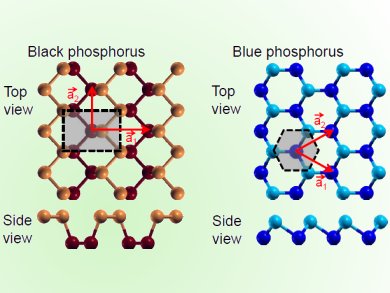Using computational models, Zhen Zhu and David Tomanek, Michigan State University, USA, predicted the existence of a previously unknown phase of phosphorus, called blue phosphorus. It shares its layered structure and high stability with the recently discovered black phosphorus, the most stable phosphorus allotrope.
Black and blue phosphorus are both hexagonal allotropes of phosphorus made of stacked 2D layers. However, a single layer of blue phosphorus is more similar to graphene than black phosphorus. The layers of blue phosphorus have ‘zig-zag’ ridges whereas black phosphorus has deeper ‘armchair’ ridges. Therefore, blue phosphorus is slightly flatter.
Unlike graphite and black phosphorus, blue phosphorus displays a wide fundamental band gap in excess of 2 eV and should exfoliate easily to form quasi-2D structures suitable for electronic applications.
The researchers suggest that blue phosphorus could be synthesised by chemical vapour deposition (CVD) onto a substrate with hexagonal symmetry, or by depositing black phosphorus onto a stepped substrate.
- Semiconducting layered blue phosphorus: A computational study,
Zhen Zhu, David Tomanek,
arxiv.org 2014.
arXiv:1403.1300




